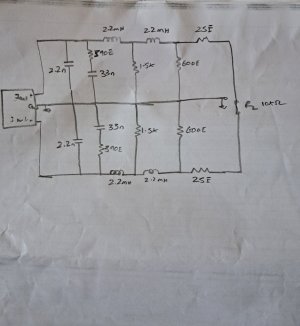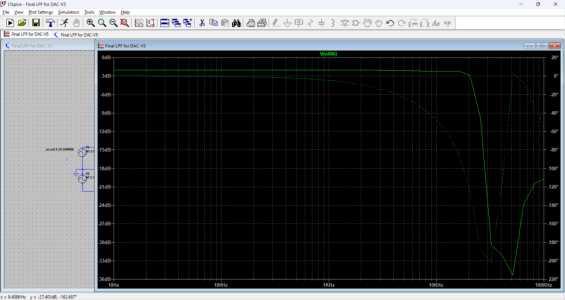After using an audio transformer coupled based passive DAC for the LPF, i shall now be attempting a passive DAC based on using just resistors, inductors and capacitors. Nothing complex, but just a simple Butterworth based filter. There are two poles in series coupled back-to-back for allowing roll-off at 44Khz and 108Khz. I am not sure how much attenuation they would provide as i am still learning to use the LTspice simulator. Below is the simple schematic,

Not sure if anyone in the forum have tried this before. If yes, need suggestions / inputs. Thanks.

Not sure if anyone in the forum have tried this before. If yes, need suggestions / inputs. Thanks.
Last edited:


